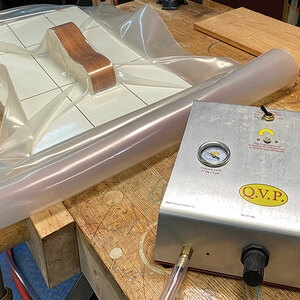Tuning and Using a Veneer Saw
Learn how to sharpen this saw to get great cuts every timeIf you’re taking up veneering, one of the must-have tools is a veneer saw. You’ll find that using a knife just doesn’t cut it. However, the veneer saw comes from the factory needing some tune up.
In this short video with Mark Arnold, one of the premier Federal furniture makers in the U.S., will show you how to tune the saw so you get great cuts every time.
|
More on veneering with Mark Arnold |
Veneer saws are designed to cut on the pull stroke so the teeth point toward the handle or the user. When the saw comes from the factory, looking at the veneer saw on end, you’ll see that the teeth are square on the tips. For best performance, you’ll want to grind an angle on the tip of each tooth, beveling it on the handle side so it comes to a knife point.
Begin by removing the blade and beveling it on the handle side. Arnold uses a medium India stone. The bevel should extend from the depth of the gullet to the tip of each tooth. Flatten the back side as well to remove the burr. Then, fine tune on a finer stone. Arnold uses a hard white Arkansas stone.
The sole of the handle also needs flattening to assure that they blade is seated properly.
Arnold cuts the veneer in a stack using a straight-edge fence on an auxiliary surface to avoid damaging his workbench. The keeper pieces go underneath the fence to assure a straight edge. It usually takes one or two strokes to get through each sheet of veneer in the stack.






















Log in or create an account to post a comment.
Sign up Log in